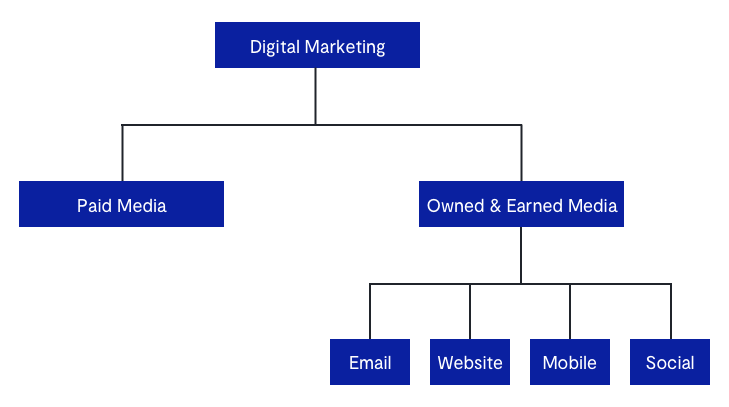
Is Your Retail Marketing Team Organized for Success?
What are your top marketing goals for the year ahead? For many retail marketing teams, that list looks something like this:
- Increase customer acquisition
- Improve customer retention
- Grow wallet share among existing customers
- Strengthen customer loyalty
Those are all meaningful goals that can make a significant difference to your organization’s success. But how do you plan to achieve those goals? Is your marketing team prepared to rise to the challenge?
In my experience working with retailers, if your team is organized by marketing channels, then you might be leaving opportunities on the table.
Is Your Retail Marketing Organized for Maximum Success?
There’s a disconnect between the way most retail marketing teams have been organized in the past and the organization required to achieve success in today’s rapidly changing digital marketing environment. Historically, retail marketing teams have looked something like this:

But as the retail marketing environment changes, this structure can hold teams back.
Think about it: When your team is organized by channel, it’s hard to connect all your efforts back to the bigger picture — those organizational goals like improving customer retention that your team is tasked to achieve. That’s because with this setup, each channel owner will lobby for new messages to go out on their channel so that they can boost performance for the area they own. But sending an email for the sake of increasing email revenue isn’t the same as running a promotion on the website to increase organic site revenue.
Furthermore, each team will have their own calendar and communicate with customers in a vacuum. But when your email communications don’t take into account your social or mobile communications and vice versa, your customers end up with a very disjointed — and perhaps even contradictory — experience.
Finally, each team will be laser-focused on a specific channel, meaning the entire group will make decisions first about the channel, second about what content to feature and how to feature it and lastly about the audience. To really optimize performance based on key organizational goals, you need to flip this order on its head, starting with the “why” and the “who” before moving to the “what” and ending everything on the “how” and “where.”
Setting Up Your Team for Success in the New Era of Retail Marketing
Going forward, the retail marketing teams that are most successful will be organized around their core goals. For example, you might have one team responsible for customer acquisition, another responsible for customer retention and another responsible for customer loyalty.
With that setup, instead of starting with a channel, you would start with a goal (e.g. customer acquisition). From there, you would map out a strategy to achieve that goal and then determine the best method to execute on that strategy, including who to target and how to target them. The channel on which you execute that strategy would be among the last decisions you make.
This goal-oriented model ensures that the “why” always remains front and center. In contrast, because the task-oriented, channel-specific model that teams have employed historically starts with the “how,” the “why” often gets lost. But that “why” should really be the driving force for everything you do, because leading with the “why” allows you to think in terms of outcomes and customer experiences — and it’s that type of thinking that will move the needle for your business and help achieve your goals.
Additionally, this change would mean that instead of looking for point solutions or technology that can stitch together siloed channel operations, you would look for solutions that can solve key business problems. For example, with this setup, you would need a solution that can tie together customer, behavior and product data from across channels and make it easy to glean insights from and act on that data on any channel.
And much like how your team aligns to key goals, your technology should be structured that way too. Because when your team and your technology are oriented to the same goals, you pave the way for every aspect of your marketing to be hyper-focused since no person or solution has any competing incentives.
What’s Next for Your Retail Marketing Team?
As your retail marketing team begins to organize around goals rather than channels, what happens next? Click here for our best practices for targeting customers across channels based on goals like acquiring new customers, driving more second purchases and retargeting recently engaged site visitors.





